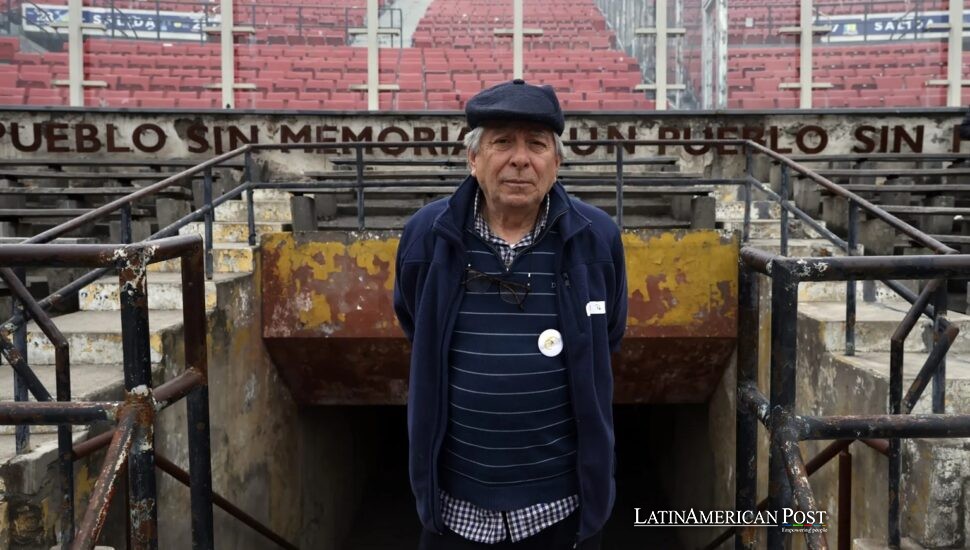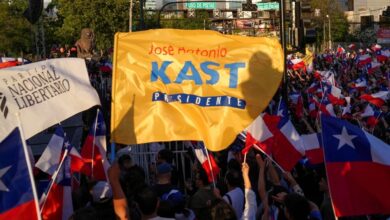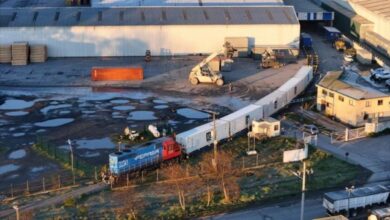Chile Pursues Truth of Deadly Brutality at Secret Military Site After Decades

A landmark event is unfolding in Chile as a group of family members of dictatorship-era victims, along with specialized police teams, gained rare access to a once-sealed intelligence facility in the Cerro Chena area. Their mission: to locate the remains of men and women last seen there during the brutal early months of Augusto Pinochet’s dictatorship (1973-1990). The effort, backed by modern geophysical tools, marks a turning point in the country’s ongoing search for closure regarding the many who disappeared over half a century ago.
Unlocking a Long-Guarded Compound
For many years, Cerro Chena remained hidden behind a veil of mystery. The Chilean Army controlled this location and used it as an intelligence center during Pinochet’s rule. In the 1970s, relatives waited near the entrance to ask about missing family members. Armed soldiers met them with empty responses. People who survived or witnessed events inside reported that captives faced severe questioning, which led to deaths along with secret burials. Courts or support organizations tried repeatedly to investigate the premises. But each time, obstacles blocked their progress. The place caused intense public distress.
Now, with new impetus from judicial instructions, police specialists have stepped through the gates—carrying advanced radar devices to scan for subterranean anomalies consistent with graves or disinterred remains. Family representatives who have fought relentlessly describe how emotional it felt to stand in the location where so much pain had occurred. In the eyes of survivors, this location represents both the atrocities of the past as well as their persistent search for missing relatives. The former military base changed from a secret location into a site where truth and reconciliation exist.
The earlier visits to Cerro Chena resulted in limited information. Research faced barriers because of incomplete testimonies and officials who withheld records. The current team believes systematic soil analysis and excavations will uncover physical proof about bodies or past burial sites. They understand, however, that an operation in the late 1970s, dubbed the “television removal,” allegedly exhumed many hidden corpses to hide evidence. Nonetheless, the families want at least to confirm or deny the presence of partial remains.
A Ruined Building and a Grim Legacy
When the police and civilian teams arrived, they found Cerro Chena in a quiet, almost deserted state. Many expected tight security. Instead, once heavily guarded, the compound presented few obstructions for the search teams. The former rural schoolhouse ranks among the most notable buildings in the area. Local accounts confirmed its role as a detention or interrogation site. The structure lies in ruins and serves as an irregular storage space. Rain damage and decaying wooden beams tell a story of abandonment. Various objects remain scattered: worn-out military helmets next to old cots – all obvious evidence of long neglect.
For the families, this site is more than a dusty building. It symbolizes the last known location of many detainees. The knowledge that their relatives were imprisoned, tortured, and possibly killed near these walls fuels a mix of sadness and resolve. According to the investigators, multiple statements from ex-conscripts, local workers, and even some retired officers place summary executions in the yard behind the school. The area was reported to be an unofficial “execution zone,” occasionally accompanied by the burning of remains. Experts believe that the radical transformations the site underwent—including the rumored exhumation operation years later—are why no remains have been positively identified.
This time, specialists aim to probe fifteen defined zones using ground-penetrating radar. The approach employs electromagnetic waves that bounce back differently when encountering soil disturbances or concealed objects. If anomalies show up consistently, they may serve as leads for more invasive excavations. Family advocates stand alongside them, hoping that some trace— even if fragments— will emerge, allowing them to bury or memorialize these long-lost individuals. Such an outcome, they emphasize, is essential for healing and could signal a more rigorous wave of investigations at other suspected dictatorship sites.
Piecing Together Crossed Clues
Chile’s memory of dictatorship-era crimes remains incomplete, partly because records were destroyed or withheld. The investigative teams at Cerro Chena analyze multiple sources to locate victims from Chile’s past. Aerial photographs from the 1970s and various evidence items serve as a research foundation. Ex-military members who perpetrated atrocities remain silent or pass away, which blocks progress in the searches. The passage of decades makes investigations hard.
The Chilean courts deal with dictatorship-era offenses in separate segments. With little assistance, one judge looks into each discovered grave site or concealed area. Similar perpetrators emerge across multiple investigations, which points to links between separate zones of disappearances. This disjointed method delays both truth finding and accountability. Even when authorities confirm perpetrators’ involvement, they may be unable to tie them to undisclosed sites without further evidence. For families desperate to find their loved ones, each new search that fails to uncover remains seems like a fresh heartbreak.
Yet these families point to Cerro Chena as a prime illustration of perseverance. Many worked together, forming groups exchanging information gleaned from older relatives or ex-conscripts who quietly came forward. This grassroots intelligence, added to official testimonies, led them to believe a final resting place for at least 20 or more detainees likely exists on the premises. Before the latest operation, no advanced scanning had taken place, so they saw the current radar campaign as the most significant step in their quest.
Opening Military Sites for Truth
Cerro Chena is not the only base or training ground rumored to host secret graves. Courts secured partial access to other sites in past decades— from Peldehue, near Santiago, to far-flung artillery ranges in remote provinces. Each instance revealed a pattern: left-wing activists, labor unionists, or indigenous organizers were kidnapped or forcibly disappeared, leaving families to wander from base to base for any sign of their fate. The families say repeated stonewalling from the armed forces underscores the importance of forcibly opening these enclaves under judicial mandates.
For many involved, the official presence of specialized investigators in Cerro Chena marks an inspiring milestone. The groundbreaking use of radar technology also instills optimism that the same methods might be deployed at other suspected burial sites. Individuals from these families realize there are no guarantees of complete bodies. The regime’s so-called “clean-up” operations in the late 1970s may mean only fleeting bone fragments remain. Still, the symbolic power of verifying that once-living fathers, siblings, or children were hidden in a covert grave can provide emotional closure.
Members of human rights organizations also hope the Cerro Chena investigation sets a precedent, encouraging the judicial system to demand the opening of even more high-security compounds. The activists demand absolute openness to overcome Chile’s history of unpunished crimes. Some critics doubt the effort or point to earlier extensive research that found no clear conclusions. The family members stay hopeful since current technology and advanced techniques may uncover what appeared unattainable in the past.
Discovering remains, belongings, or hidden burial sites at Cerro Chena would ignite fresh debates throughout the country. Legal prosecution and acknowledgment of how forced vanishings impacted citizens during the last five decades must follow. That might mean confronting officials who once served at Cerro Chena or unveiling new links in the chain of command that sanctioned extrajudicial killings. Ultimately, the families want a measure of truth, even if it is a partial one, to close a cycle of grief lasting half a century.
While no outcome is promised, the recent expedition at Cerro Chena has already shifted the narrative. Families now enter the grounds freely. They place commemorative markers on the soil where relatives rest beneath. Police operate radar equipment across areas that likely contain human remains. The scene shows progress but reminds everyone of past atrocities that forced these searches. The discovery of actual burial sites would let mourners conduct proper farewell rituals – a meaningful step for Chileans who deal with trauma from the former regime.
Also Read: The Untold Story Behind Latin America’s Deadliest Airline Crash
The work at Cerro Chena reveals how Chile faces its painful past along with the pursuit of truth and healing. When the radar efforts conclude, many will hope that the sign “No remains found” does not appear. And if fragments emerge, it might prove the country’s institutions can unite to offer at least a semblance of closure. That, in itself, would represent a critical step forward after half a century of unanswered questions.




